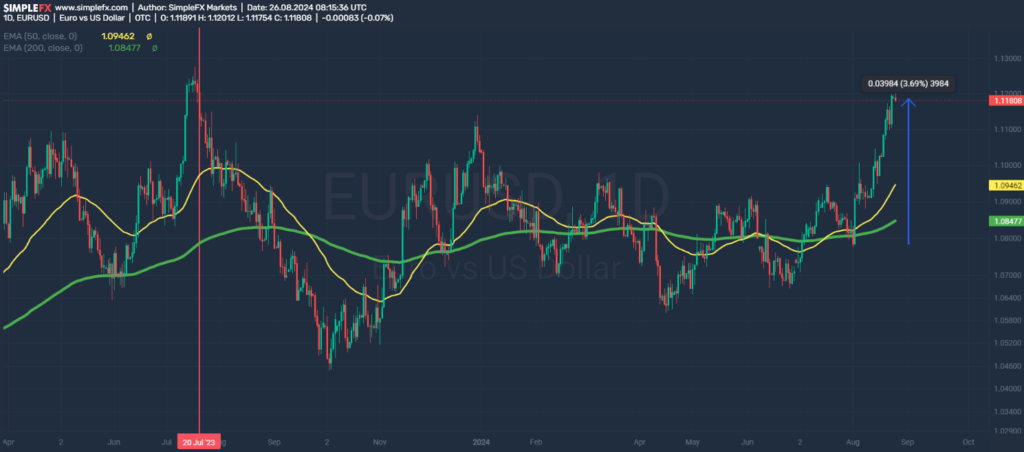On August 23, 2024, Federal Reserve Chairman – Jerome Powell delivered a landmark speech at the Jackson Hole Economic Symposium, signaling a shift in the Fed’s approach to monetary policy. What exactly did he say, and how did markets respond?
Inflation Tamed: A Path to 2%
Powell’s speech at Jackson Hole was notable for its tone of optimism. He emphasized that inflation, which had surged to alarming levels after the COVID-19 pandemic, is now on a sustainable path back to the Fed’s 2% target. Citing recent data, the chairman noted that inflation has significantly declined from its peak of 9.1% in mid-2022 to just 2.9% last month. The Fed’s preferred inflation gauge showed an even more encouraging drop to 2.5%, suggesting that the aggressive interest rate hikes over the past two years are finally paying off… at least in fighting inflation, because, as the latest data shows, the labor market is clearly weakening.
The Road Ahead: Preparing for Rate Cuts
In perhaps the most anticipated part of his Jackson Hole speech, Powell signaled that adjustments to interest rate policy are on the horizon. Describing the “direction of travel” as clear, the message was that rate cuts could be forthcoming. However, the timing and pace of these adjustments will depend heavily on incoming economic data and the evolving risk landscape.
This marks a significant shift from the earlier focus on combating stubborn inflation to ensuring a strong labor market, as was indicated by Powell’s dovish tone during the speech.
Stephen Brown, an economist at Capital Economics, suggested that Powell’s commitment could imply a potential 50-basis-point rate cut at the Fed’s September meeting. However, such a move might require a further increase in the unemployment rate in the August jobs report, which Brown believes is unlikely. As per Monday’s market consensus, the chances of a 25-basis-point cut are priced at 63.5% and a 50-basis-point cut at 36.5%.
EURUSD at its highest level in over a year.
Financial markets responded positively to the speech, awaiting more precise signals about the Fed’s next moves. Stocks rallied during the remarks, and the bond market responded favorably, with yields on 10-year Treasury notes dipping. The U.S. dollar, however, weakened, reflecting expectations of lower interest rates in the near future. EURUSD rises by 3.7% in August.
Learning from the Past: A Humble Approach
Powell also took a reflective tone, acknowledging the challenges that the Fed faced in navigating the unpredictable economic landscape since the onset of the pandemic. He admitted that the initial optimism about inflation being “transitory” was misplaced and that the Fed, like many other central banks and economists, underestimated the persistence of inflationary pressures.
Powell argued that this humility is essential for future policymaking. He emphasized the importance of remaining flexible and responsive to new data, a lesson learned from the turbulent economic conditions of the past few years.
Conclusion
As the Federal Reserve looks ahead to its next meeting on September 18th, investors and economists will closely watch for any further indications of rate cuts. Powell’s Jackson Hole speech has set the stage for a potential pivot in monetary policy, marking a new chapter in the Fed’s efforts to balance economic growth with price stability.
The information provided on this website does not, and is not intended to, constitute investment advice; all information, content, and materials available on this site are for general informational purposes only.


